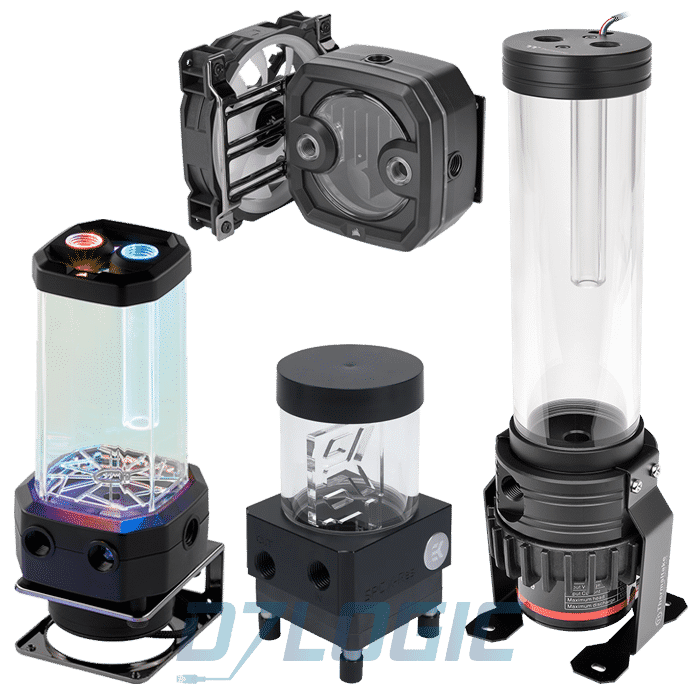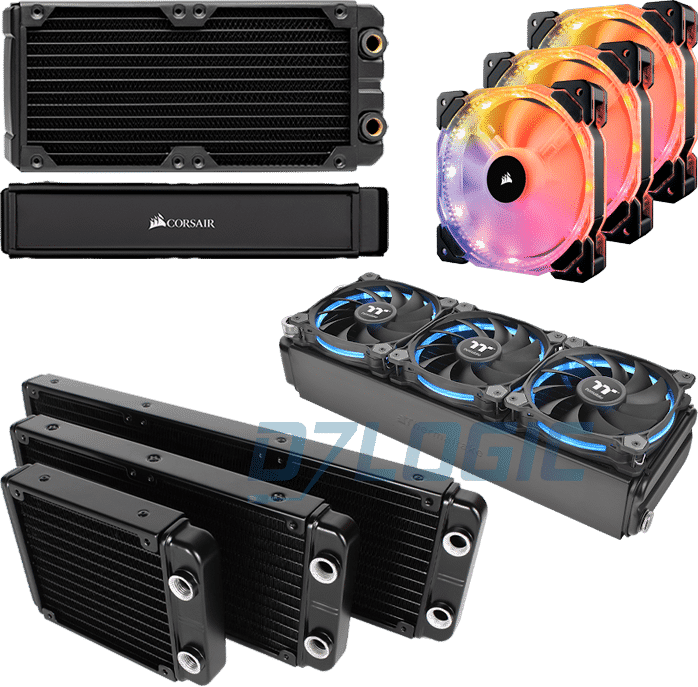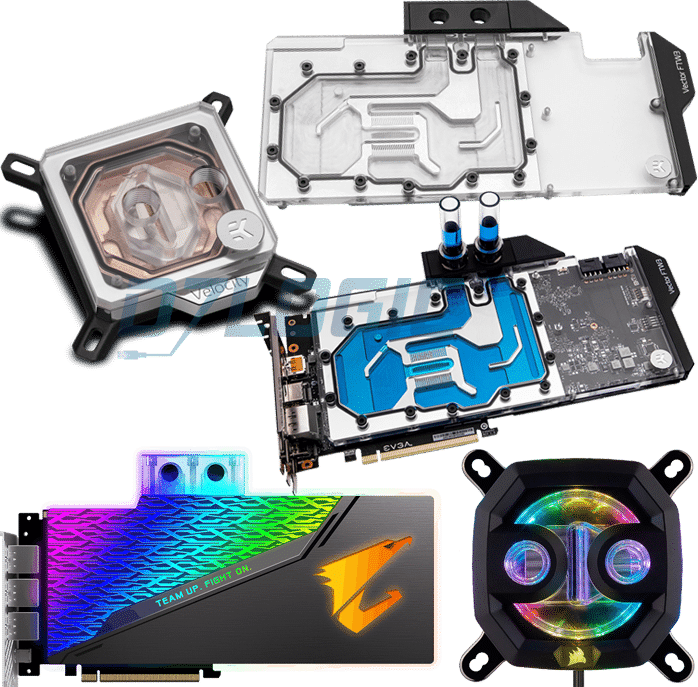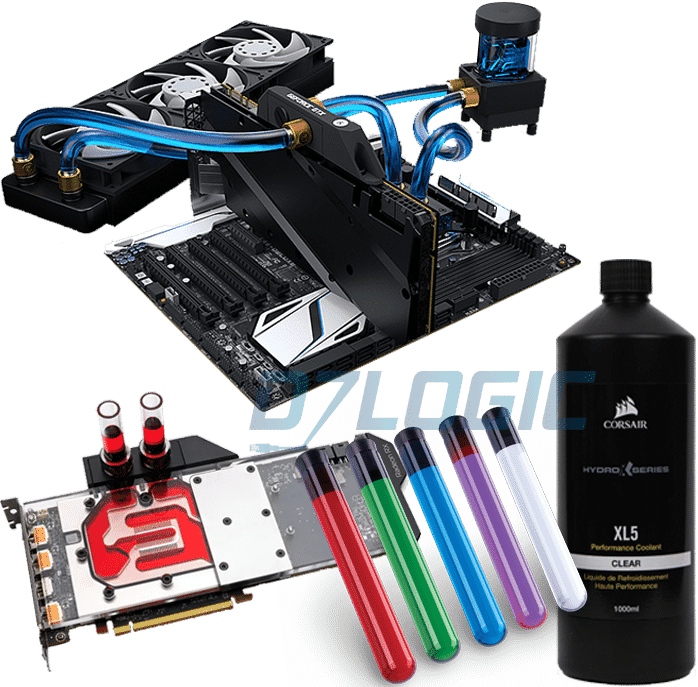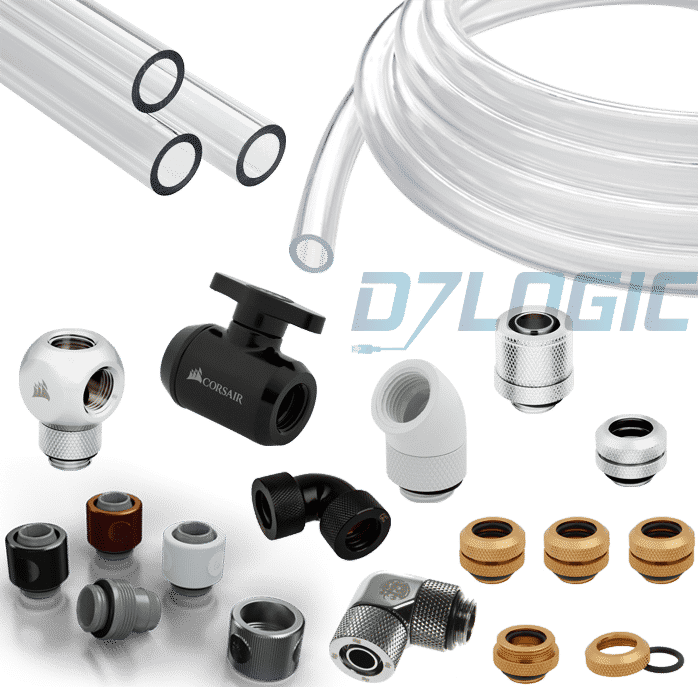
Get your own
Custom Water Cooling PC
Water Cooling allows us to achieve incredible performance by pushing your CPU and Graphics Card to their limits by overclocking, while keeping them cool at the same time.
CUSTOM
PC BUILDS
+
LIQUID COOLING
Whether you're a gamer looking for a fantastic in-game experience,
a streamer in dire need for a smooth live stream, or creator in-demand for a more seamless creative workflow...
We are dedicated to provide our clients with everything they need to build the best PC for their budget.
Using water to cool your PC is the Holy Grail of computer cooling and is the ultimate service a system builder can offer. Water is over 700 times more dense and can absorb heat 23 times faster than air. Not only is water cooling efficient but is also quiet in operation and looks amazing.


INTEL®
Take control of your performance with the Intel® Z490 chipset and unlocked 10th Generation Intel® Core™ processors. Perfect for serious multitaskers, gamers or multimedia enthusiasts.
Intel® Core™ i3, i5, i7, i9, Intel® Xeon®, Celeron® & Pentium® Processors.
AMD
Aimed for high-performance gaming. AMD Ryzen™ processors feature Blazing speed utilising multi-core processors. Uncompromising features and smooth performance with AMD.
AMD Ryzen™, Threadripper™ or Athlon™ Series CPUs.



Performance
Motherboards

Graphics Card
Navigating through the best graphics cards can be a daunting task when building your own gaming PC. Aside from finding the best CPU for gaming to accompany it, this one decision can make or break your gaming experience. It’s where the bulk of your build or upgrade budget is going to be spent, so it’s surely the component a PC gamer will give the most thought to. Leave it to us, we'll help to find the best Graphics Card for your need.

RGB Lights
Customize your gaming rig with digitally controlled lighting effects and let your system come to life.
Whether you like your PC to look like a rainbow unicorn or prefer something a little more subtle, there are many ways in which RGB lighting can augment your PC. From flashing cascades of colour, to nuanced pulses of muted tones, RGB lighting is a major component in any PC build where you care about the looks.

Water-Cooled PC
The simplicity or complexity of a custom loop all depends on your requirements, the hardware selected and how minimal or outlandish you want the end result to be. The options are almost limitless!
Custom loops consist of installing each component individually to your specific requirements, making your build that little more unique.

Why Liquid Cooling?
Liquid cooling, also commonly called water cooling, is the best solution for rapid heat removal due to its unmatched thermal performance. It is the only cooling solution that allows successful heat removal from critical spots in the modern day PC with zero noise pollution!
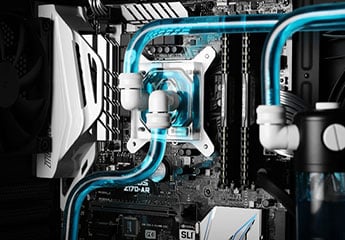
Performance
The most common way to cool hot components today is by using big stock coolers with air flow, provided by the stock fans that come with your CPU and GPU. The fans run at a very high RPM and are quite loud. By installing liquid cooling, you get rid of the loud fans plus, compared to air, water is much better at transferring heat from the hot components.
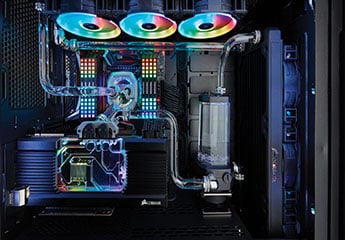
Compact, Neat & Tidy
Your GPU usually takes up two slots and by having multiple-GPU system build you can quickly run out of free PCI-E slots.
By removing the stock cooler and installing a water block, you can change your graphics card(s) into a single slot component, thus allowing double computer power in the same cubic footprint.
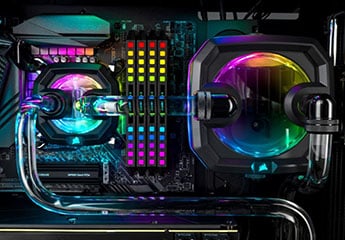
It’s Quiet
Because liquid cooling radiators provide a huge cooling area, we can use fans at very low speeds, that are practically inaudible.
Meaning, you won’t have Fans constantly running at a high RPM. You can enjoy gaming and everyday desktop work with absolutely no noise coming out of your computer!
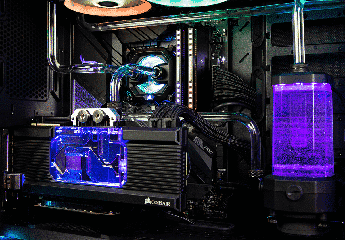
Not just for gamers
Gaming seems to get all of the attention when it comes to cooling for performance, but anyone working with electronics can benefit from the power of water cooling. This efficient approach to protecting your gear means anyone performing more strenuous tasks won’t have to worry about their computer overheating and potentially wiping out hours of work.
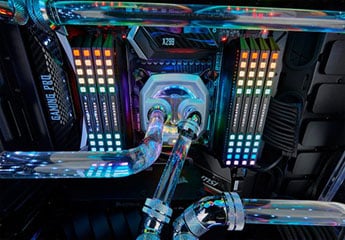
Great Overclocking
Every overclock raises the frequency of the chip, giving your hardware better performance. This generates even more heat than stock frequencies and the most important thing is to sufficiently transfer the excess heat away from the source. Liquid cooling is the only solution that can keep your overclocked hardware under control without the risk of overheating.
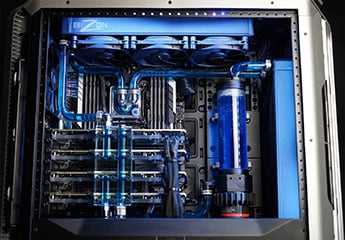
The Look
Besides all of the technical reasons why you should liquid-cool, liquid cooling allows you to turn your PC into a visual masterpiece.
Everyone who is pursuing aesthetics gets almost unlimited possibilities for modding and creating something that will go viral on the internet for sure!
WHAT'S NEEDED FOR WATER COOLING
The first step is to decide which components you want to liquid cool, usually we start with the CPU and continue from there. CPU and GPU loops are one step further, but you can always continue to add more components to the loop.
D7Logic will talk you through the options and the different varieties in brand, size and prices.
In a water cooling loop a reservoir is used to hold the coolant in the loop, making bleeding out bubbles easy. In other words, it allows air bubbles to slowly be replaced by water as it circulates. It’s also the filling point for the coolant. Reservoirs come in stand-alone form or as a pump and reservoir combination.
Pumps are the heart of a water cooling configuration and come in all manner of different designs and sizes with varying power requirements and noise output. It’s a basic yet crucial component that sets the whole thing in motion, and the more components you wish to water-cool, the stronger your pump needs to be. The flow rate of the pump measures how much water your pump can circulate without restriction, and is a fairly important consideration to account for. However, the maximum flow rate of a pump that manufacturers mention on their products assumes a zero static head pressure, meaning the actual flow rate would be quite a bit lower than the maximum listed flow rate.
The most common type of water pump these days is called a DC pump, which is the most cost-effective and is generally highly reliable with only the single moving part, although there are more powerful pumps out there such as for high-end custom loops.
Radiators function to keep the water cool as it moves around the loop. It does this by exchanging heat with the surrounding air via the copper fins that make up the radiator’s core. Heated water flows through these fins and are cooled by the radiator’s fan. They come in various shapes, sizes, thicknesses and fin densities. In general, the bigger the overall surface area of your radiator, whether that is one big radiator or multiple smaller ones, the more effective your loop will be dissipating heat, which also leads to less noise as fans can be run at slower speeds.
You have to choose a radiator (or multiple radiators) that is going to comfortably fit in your case. A good rule of thumb to follow is to shoot for a minimum of 120mm/140mm of radiator surface area for each component you are cooling in the loop, and to add another 120/140mm if that part will be overclocked. The thickness and fin density of your radiator, measured in FPI (fins per inch), are also fairly important considerations and will dictate what type of fan you want to use on your radiator. The higher the FPI of a radiator, the higher the static pressure you’ll require to effectively circulate cool air through that radiator.
Radiators also have other features such as Crossflow, where there’s an inlet on either side of the radiator, as opposed to the standard inlets on the one side, which may help some water loop setups. Some radiators also have various fin materials which can improve performance.
A water block is what you mount onto each hardware component that you wish to include in your loop, and is used to transfer heat energy from that component and into the water in your loop. Water blocks rely on surface area to exchange heat effectively, with more surface area equalling more heat being transferred and therefore more effective cooling. Water blocks use either pins, fins and/or channels to increase surface area, with CPU water blocks typically using pins and fins. All CPU blocks feature G1/4″ threaded ports for universal compatibility with PC water cooling fittings and radiators.
GPU water blocks come in two varieties; full cover and universal blocks. Full cover blocks will fit the one specific GPU model while universal blocks will, fit a variety a different graphics cards. Some Manufacturer such as Aorus, MSI or EVGA, sell pre-assembled Graphics Cards with Waterblocks which makes it easier for the consumer to attach it directly to their loop. To reduce corrosion you should stick to blocks made of the same metal. If you have a copper CPU block then try to also get a GPU block made of copper.
There are also other water blocks out there to cool your RAM, Storage Devices and Motherboard. Motherboard water blocks are like GPU ones; they have universal and model-specific versions. The most common for motherboards are pre-assembled waterblocks by the manufacturer or individual blocks such as the Chipset blocks and Monoblock.
Coolant is the cooling liquid that circulates in the water loop to cool down the computer components. Coolant is made up of distilled water and additives that kill living organisms and prevent corrosion, and you can either buy specific water cooling coolant or you can buy the additives separately and make up your own. If you go the do-it-yourself route then make sure to use distilled water, as tap water can contain impurities that may cause algae to grow in your system, which could then lead to clogged up tubing and corrode the water blocks. The safest bet is always to go with the pre-mixed coolants sold by known brands.
Water is over 700 times more dense and can absorb heat 23 times faster than air. The water will be at its coolest point once it leaves the radiator, so we want it to pass over the CPU right away. The warm water that’s transferred away from the CPU will then be routed back into the reservoir. From there it heads through the pump, and back through the radiator, completing the cycle.
The function of the tubing part of a water cooling setup is pretty self-explanatory, and is what allows the coolant to flow around through all the parts of the system, however it does come in many different types, materials and sizes and so there are a lot of options to consider. The first thing to consider is whether you want to get soft or hard tubing. Soft tubing is more flexible, easier to bend, cheaper and easier to work with, whereas Hard tubing requires more work and will need to be heated and bent into shape to reach your fittings. The tubing you get will be based on both the space you have inside your rig as well as personal preference. You will want to make sure the tubing you get will work with the fittings you get, and that the Inner Diameter and Outer Diameter of your tubing is compatible with the Inner Diameter and Outer Diameter of your fittings.
The fittings are what allow you to connect your tubing with the other parts in your loop, and they come in various shapes and sizes. Their style will also depend on whether you are using soft or hard tubing, and in general you will be needing two fittings for every part of your loop. When it comes to choosing fittings you have the option of either barb fittings, which are basically just a spout that fits onto your loop parts and are the economical option, or compression fittings which are like barbs but with a compression ring on the outside for extra security and a tighter fit. Compression fittings are more expensive but look better, and they come in either a traditional or acrylic style, with acrylic fittings designed to be used around hard tubing. You can also get angled fittings which can improve the aesthetics of your loop.
You Design, We Build. Let's get started...
Custom PC Build (Standard)
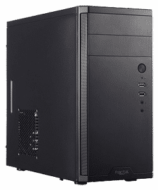
Suitable for browsing the Internet, writing E-Mails, streaming Videos and Music. Efficient and quiet.
- Assist in Purchasing Parts
- Professional Build Quality
- Same-Day / Next Day Build
- 30 Days Warranty
Custom High-End / Gaming PC Build
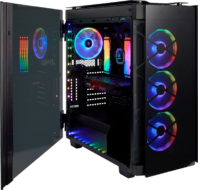
Designed for playing the latest AAA Games. Suitable For Video/Photo editing, Audio Production and 3D/CAD work.
- Same as Standard Build
- Unlimited Fan Installation
- Unlimited RGB Installation
- Cable Management
High-End PC Build + Liquid Cooling
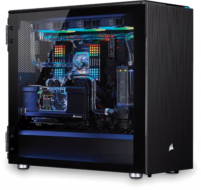
Ideal for Overclockers. Liquid cooling allows you to push to the absolute limit while maintaining safe temperatures.
- Same as High-End Build
- OS Installation + License
- Fan Speed Configuration
- Benchmark & Stress Testing
- Tell us your Budget and we source the Parts
- We assist in Purchasing your PC components
- Order and get the components delivered to you
- Once arrived, book a same-day appointment
- Bring them over to us or we come to you
- PC will be built Same-Day / Next Day
- OS Installation / Stability Testing (if requested)
- Once Quality Check complete - Ready to pick up
Book your Specialist
07713 907663
Want to build your own PC and need ideas on where to get started?
Get in Touch with Us and we help you to build your dream computer, be it for Office, Home, Gaming, Music Production or Photo & Videography. We find the right components for your budget.


